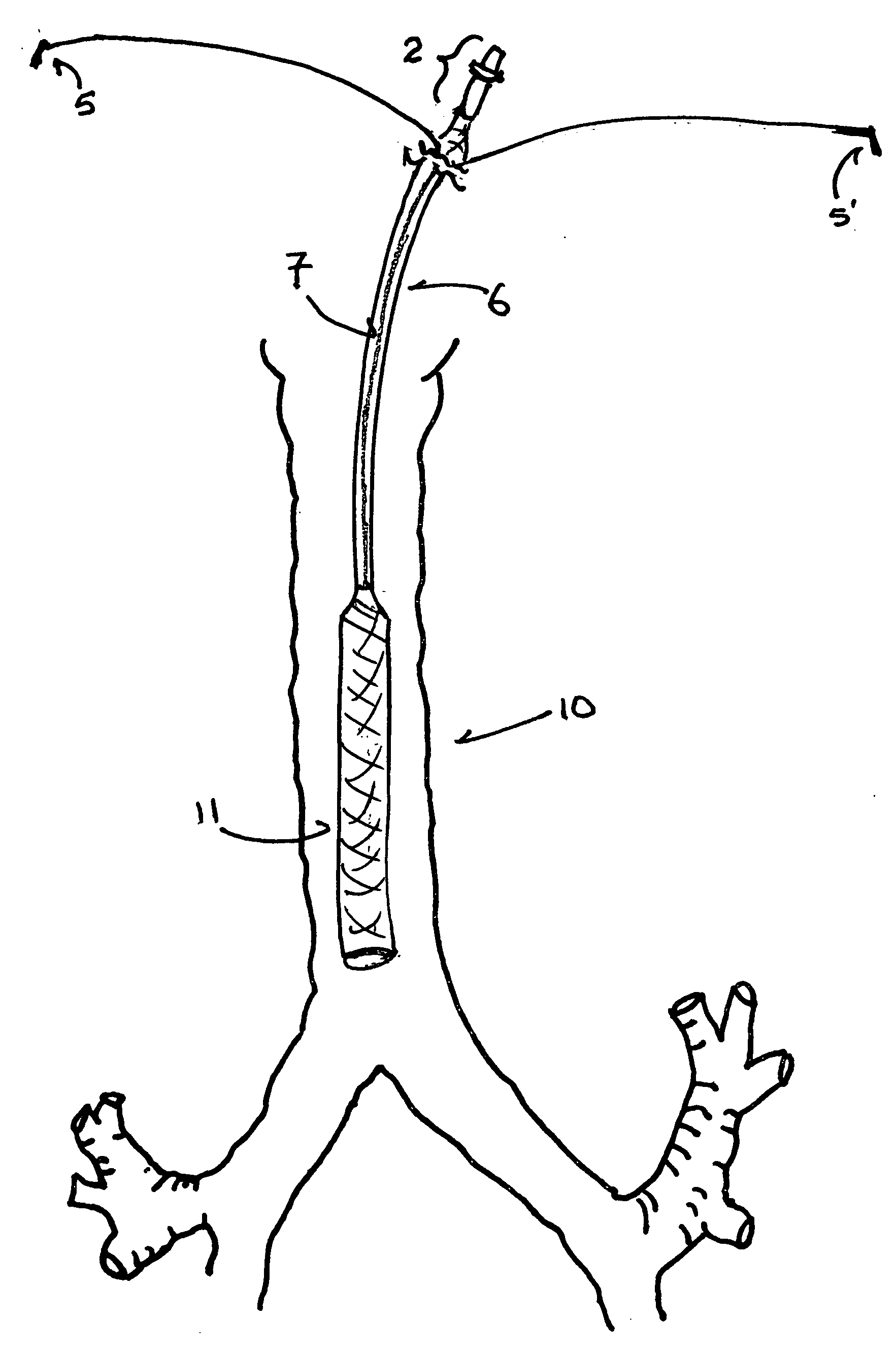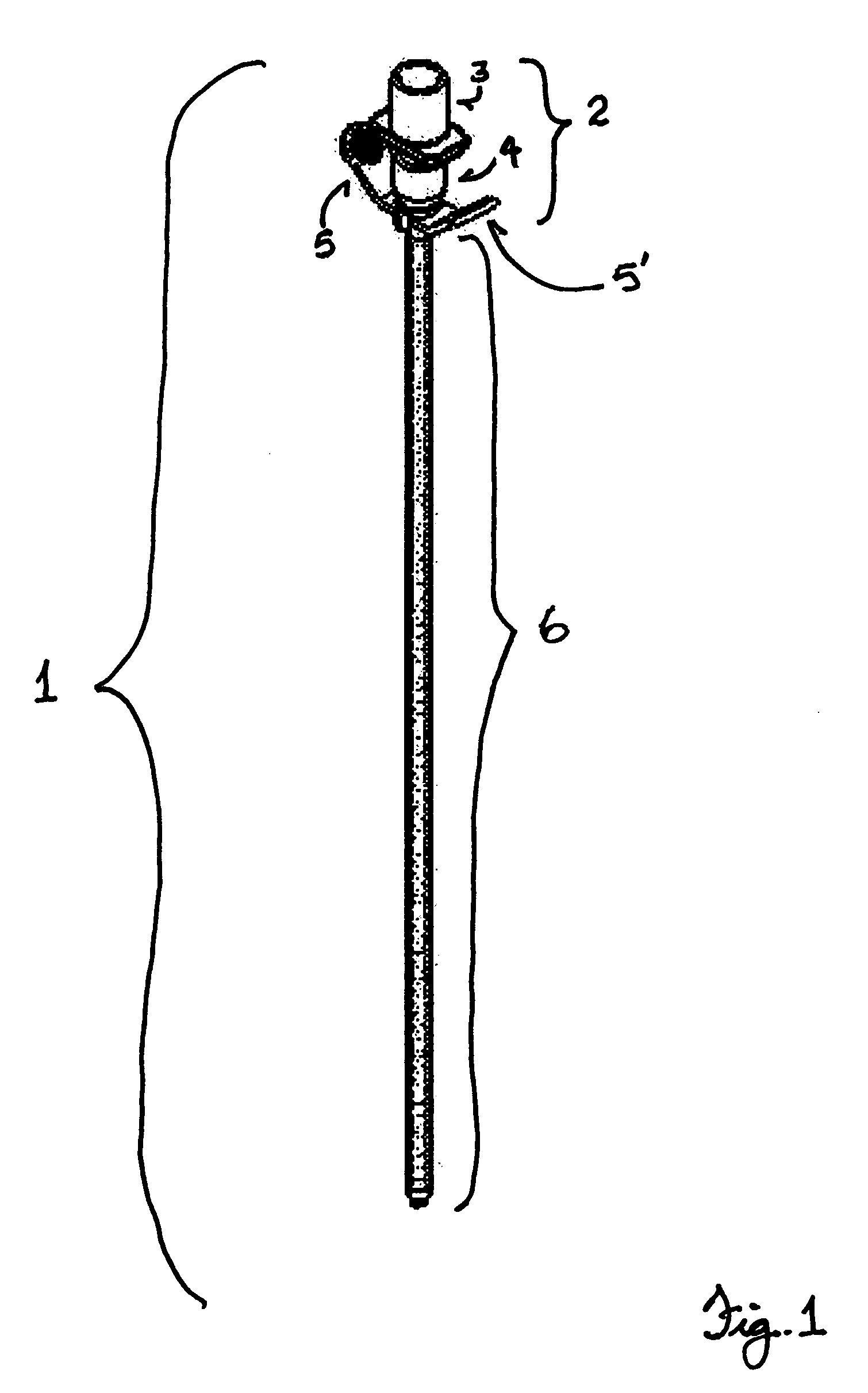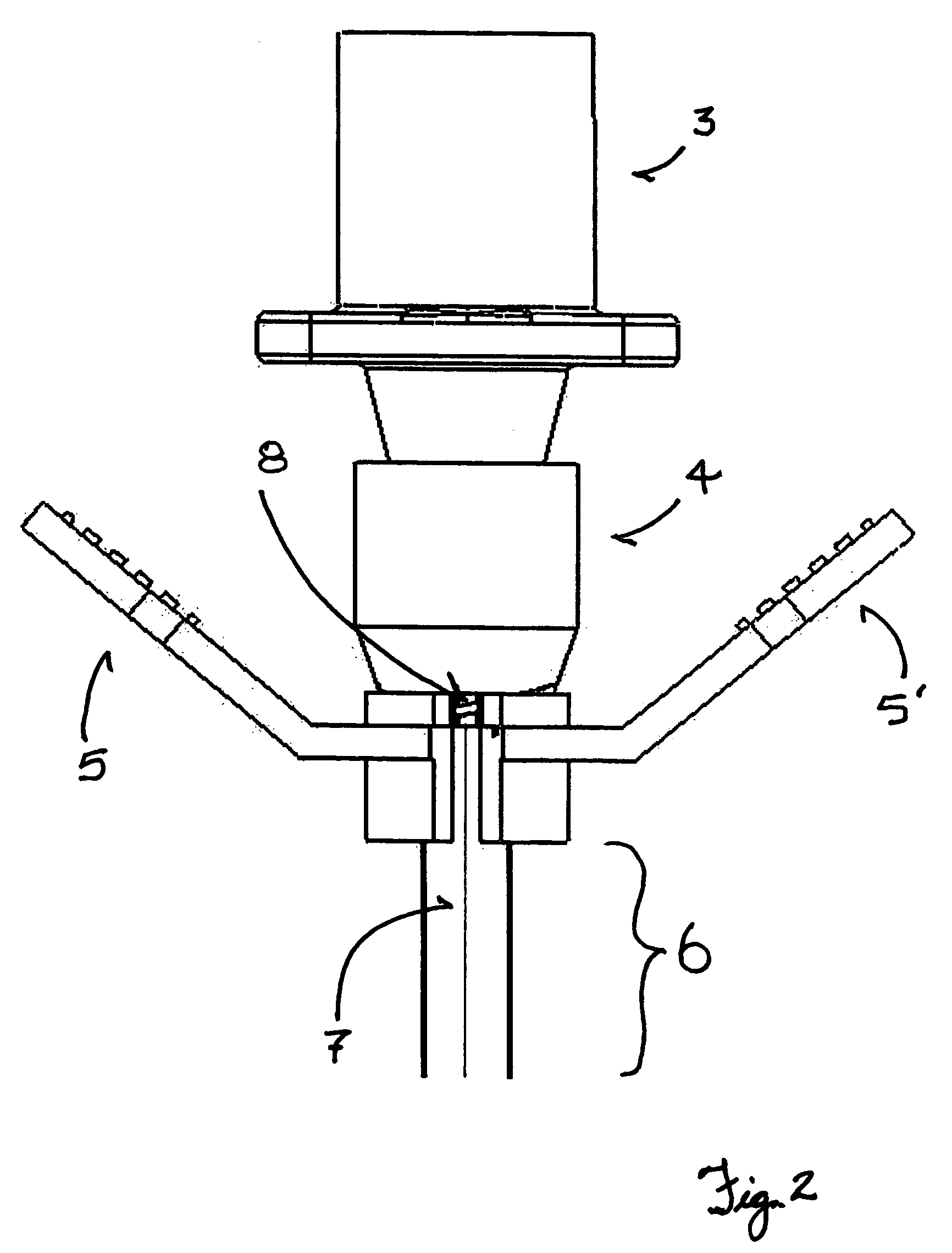Shape-memory port-access tube
a technology of memory port and access tube, which is applied in the field of memory port access tube, can solve the problems of rescheduled surgery, large administrative, professional and emotional cost, and difficulty in rescheduling surgery, so as to facilitate the withdrawal of the tube, reduce the diameter of the tube, and improve the ability to travers
- Summary
- Abstract
- Description
- Claims
- Application Information
AI Technical Summary
Benefits of technology
Problems solved by technology
Method used
Image
Examples
Embodiment Construction
[0038] An embodiment of the NaPier tube with a round lumen after activation (“round-lumen embodiment’) is a circumferentially (i.e., radially about the longitudinal axis) self-expanding port-access tube for insertion through a port into a body passage. A basic, unactivated embodiment of a NaPier tube comprises a compressed, round, tubular, shape-memory element (“frame”) in circumferential association with a thin, expandable, elastomeric or fabric wall material and contained in a removable sheath. The removable sheath maintains the shape-memory element in a compressed state; the sheath extends around the exterior surface of the full-length of a plain tube or from the distal end to the hub, defined below, of a hubbed tube.
[0039]FIG. 1 shows an unactivated, hubbed NaPier tube (1) with a preferred embodiment of a hub (2) and a tear-away sheath. A fitting (3) is solidly affixed to a sleeve (4) that has external threads on its distal portion. The fitting (3) and sleeve (4) form the hub (...
PUM
 Login to View More
Login to View More Abstract
Description
Claims
Application Information
 Login to View More
Login to View More - R&D
- Intellectual Property
- Life Sciences
- Materials
- Tech Scout
- Unparalleled Data Quality
- Higher Quality Content
- 60% Fewer Hallucinations
Browse by: Latest US Patents, China's latest patents, Technical Efficacy Thesaurus, Application Domain, Technology Topic, Popular Technical Reports.
© 2025 PatSnap. All rights reserved.Legal|Privacy policy|Modern Slavery Act Transparency Statement|Sitemap|About US| Contact US: help@patsnap.com



